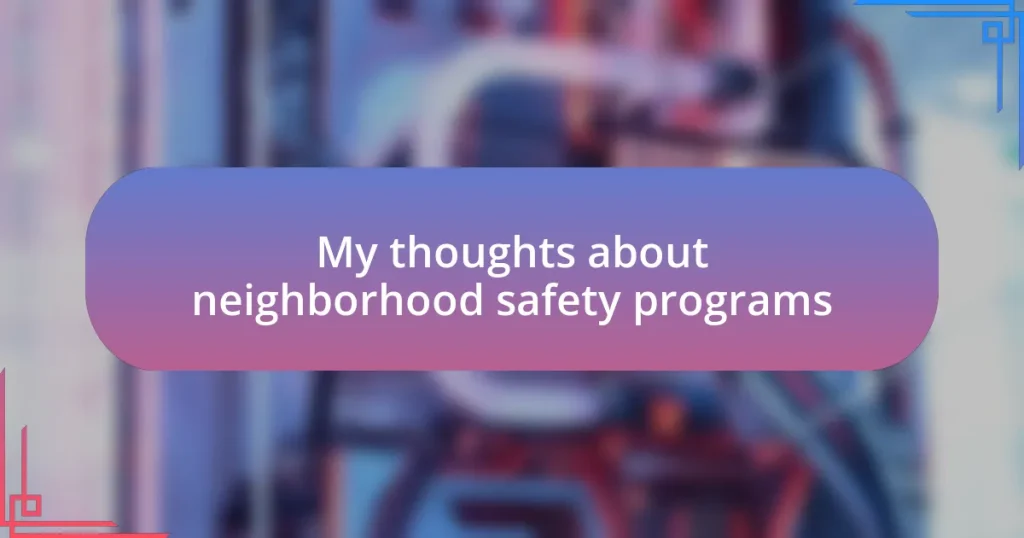Key takeaways:
- Neighborhood safety programs foster community bonds and encourage collaboration among residents, leading to a sense of security and belonging.
- Common types of safety initiatives include Neighborhood Watch, Community Policing, Safety Education Workshops, Youth Engagement Programs, and Environmental Design Strategies, each addressing different needs.
- Engaging the community in safety discussions enhances ownership, trust, and the development of innovative strategies tailored to specific safety concerns.
- Challenges faced by safety programs include inconsistent community engagement, funding limitations, and differing perceptions of safety among residents.
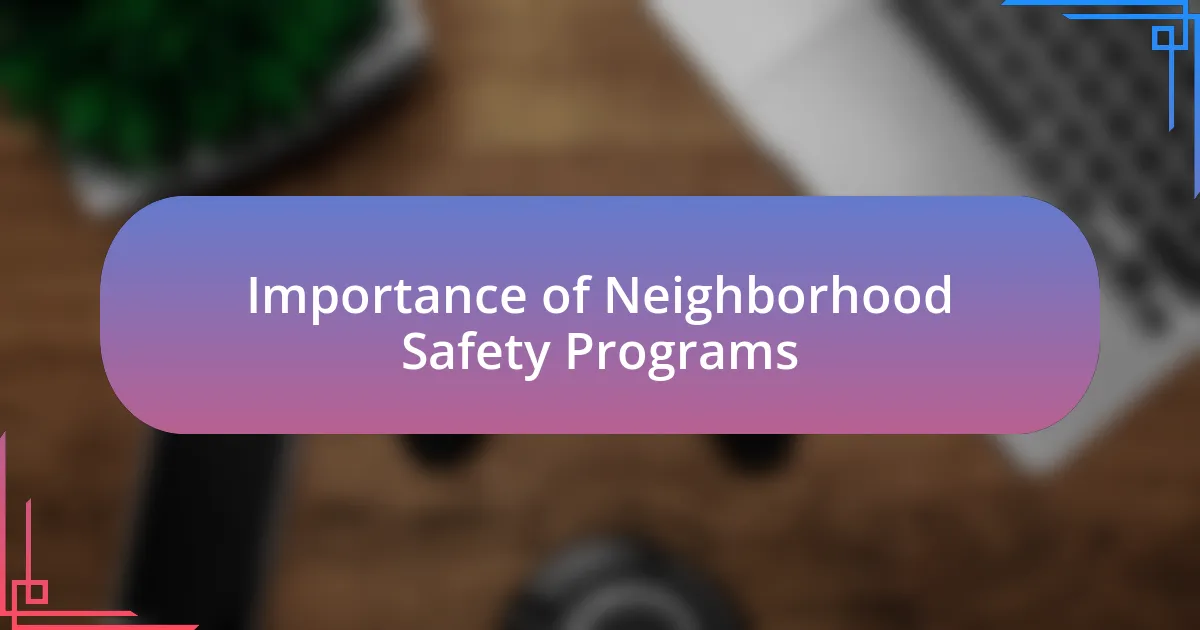
Importance of Neighborhood Safety Programs
Neighborhood safety programs play a crucial role in fostering a sense of community. I remember when my neighborhood initiated a crime-watch program; it was heartening to see neighbors coming together for a common cause. Isn’t it inspiring how a well-organized group can transform an entire area, creating bonds and building trust?
When residents collaborate on safety initiatives, the outcomes often exceed expectations. For instance, shortly after our local program started, we noticed a significant drop in petty crimes. Have you ever felt that sense of security when you know your neighbors are looking out for one another? It’s a powerful feeling that cultivates not only safety but also a genuine sense of belonging.
Moreover, these programs often empower citizens to take an active role in their environments. I recall participating in a safety workshop; it opened my eyes to simple but effective measures we could follow. How many times have you thought about the impact your involvement could have on making your neighborhood safer? It’s a reminder that community safety isn’t just a responsibility; it’s a shared mission that can invigorate our neighborhoods.
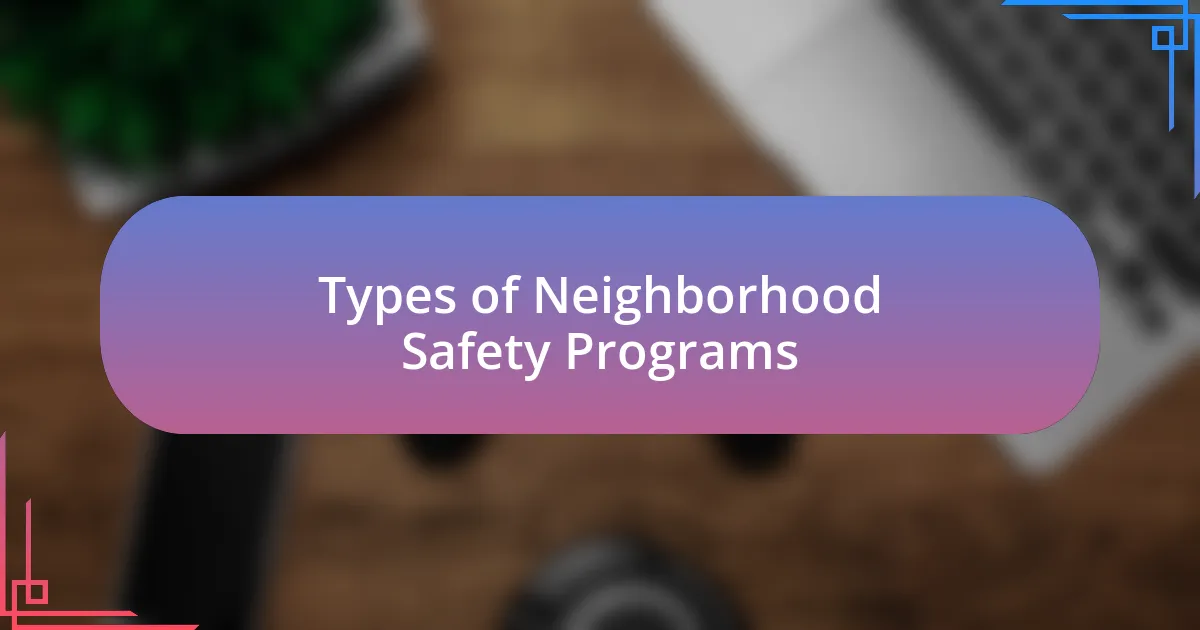
Types of Neighborhood Safety Programs
Neighborhood safety programs come in various forms, each tailored to meet the unique needs of different communities. I’ve seen firsthand how diverse these initiatives can be, from neighborhood watch groups that actively monitor suspicious activities to community outreach programs that focus on educating residents about safety practices. It really makes a difference when people are informed and engaged, wouldn’t you agree?
Here are some common types of neighborhood safety programs:
- Neighborhood Watch: Residents keep an eye out for each other and report any suspicious activity to local authorities.
- Community Policing: Police officers engage with community members to build trust and ensure effective communication.
- Safety Education Workshops: These programs teach residents about crime prevention techniques and emergency preparedness.
- Youth Engagement Programs: Activities aimed at youth that focus on positive behavior and reducing juvenile crime.
- Environmental Design Strategies: Initiatives that modify public spaces to make them safer, such as improved lighting and visibility.
These programs not only help reduce crime but also knit the fabric of the community tighter. It’s incredible to witness the transformation when people feel involved and valued, making safety a collective effort.
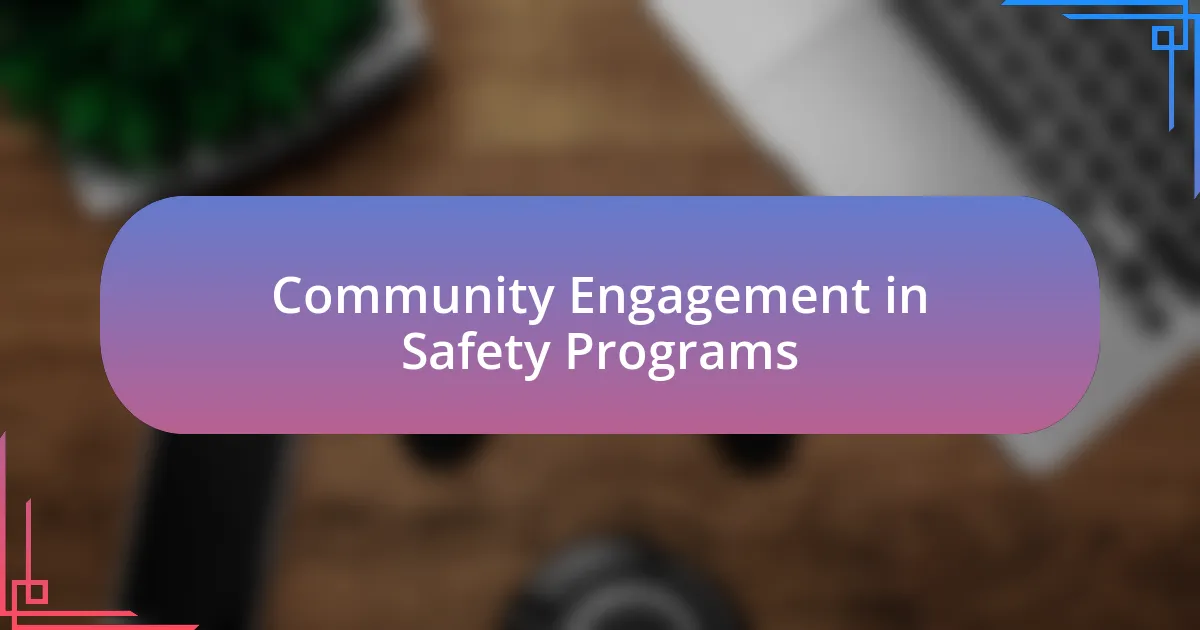
Community Engagement in Safety Programs
Engaging the community in safety programs fosters a sense of belonging and collective responsibility. I remember attending a neighborhood safety meeting, where I saw firsthand the passion residents had for improving their environment. Their eagerness to share ideas reflected a deep commitment to making our streets safer, showcasing how a engaged community is more likely to thrive.
Moreover, when various groups partner in these programs, the results become even more impactful. Think of a local school working together with police to educate students about safety. In my experience, these collaborative efforts create not just stronger safety nets, but they also build lasting relationships that extend beyond the immediate goal of crime prevention.
Involving everyone in the conversation encourages diverse perspectives, which are crucial for developing effective strategies. I often found that when the voices of different age groups and backgrounds were heard, innovative solutions emerged. This blend of ideas amplifies the drive towards a safer neighborhood and promotes overall community spirit.
| Community Engagement Aspect | Impact |
|---|---|
| Inclusive Participation | Fosters a sense of ownership and responsibility among residents. |
| Partnerships | Enhances trust between community members and local law enforcement. |
| Diverse Perspectives | Encourages innovative safety solutions tailored to specific community needs. |
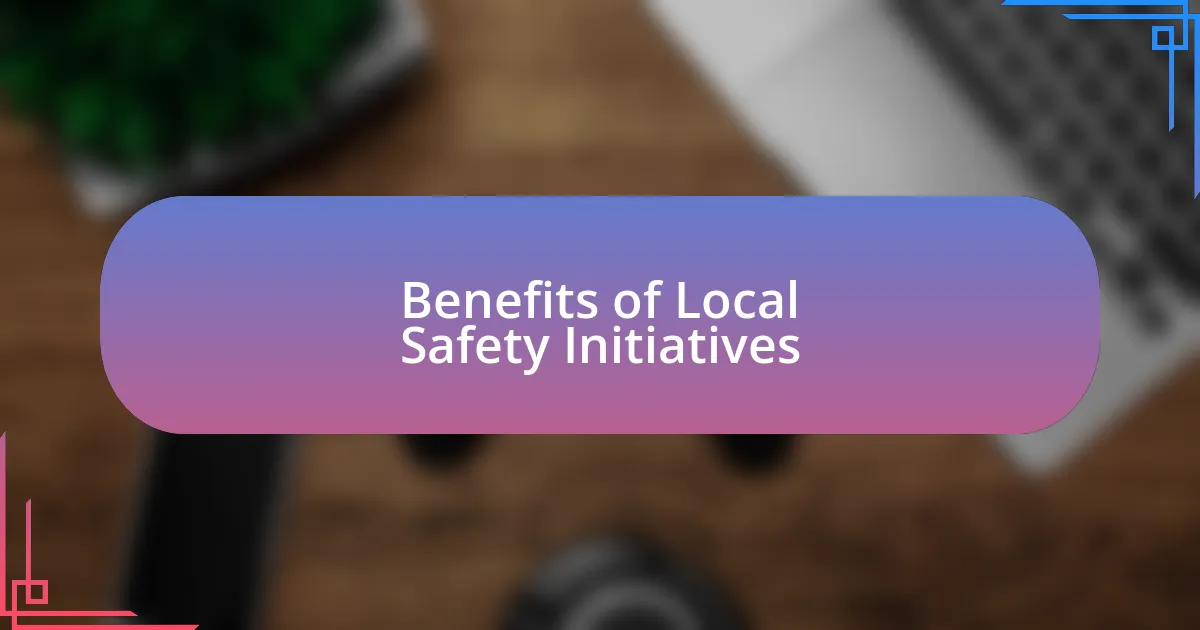
Benefits of Local Safety Initiatives
Local safety initiatives have a unique way of strengthening the fabric of our neighborhoods. I remember a recent neighborhood watch program that not only reduced crime rates but also made people feel more secure walking their dogs at night. Isn’t it fascinating how a simple initiative can transform the way we interact with our surroundings?
These programs often lead to immediate, tangible benefits like reduced crime and increased emergency preparedness. During a community safety fair I attended, residents were equipped with helpful resources and tips on home security, which left me feeling empowered and capable to contribute to my family’s safety. What more could we ask for than feeling better prepared in an unexpected situation?
Furthermore, it’s not just about safety; it’s about building relationships within the community. When I volunteered with a local safety initiative, I met neighbors I had never spoken to before, which led to discussions about potential safety improvements. Can you imagine the connections that blossom from shared goals and efforts? That’s the beauty of local safety initiatives—they foster unity while working towards a common purpose.
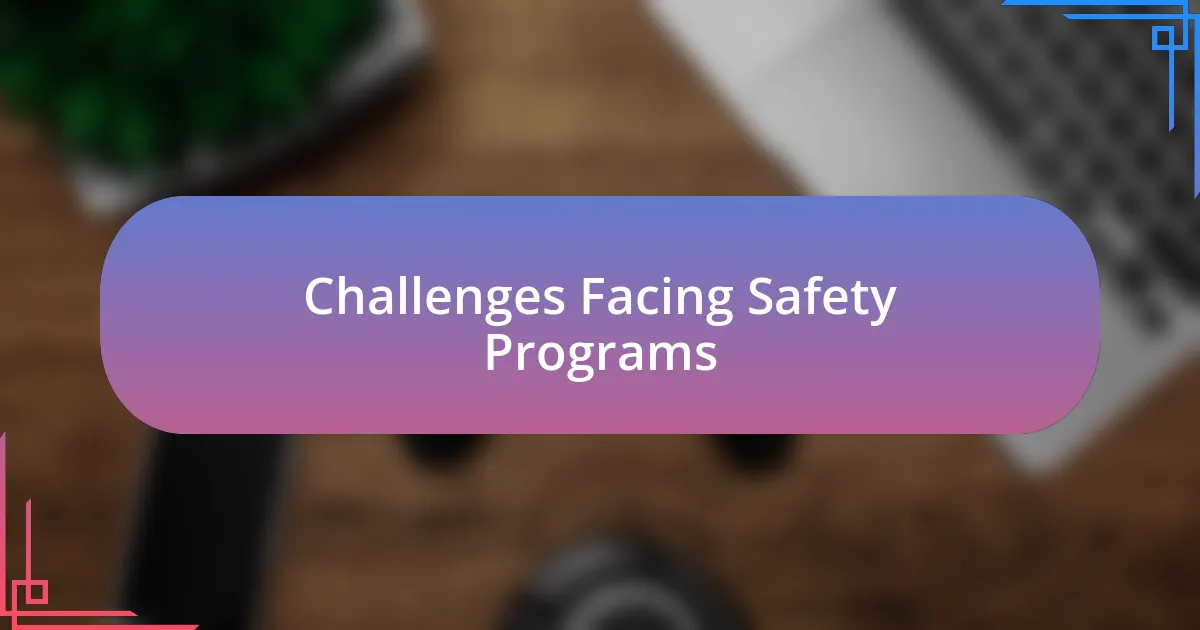
Challenges Facing Safety Programs
A significant challenge facing safety programs is the inconsistency in community engagement. During my time participating in a neighborhood safety meeting, I noticed that only a handful of residents showed up, while others who voiced concerns on social media were nowhere to be found in person. Why is it that people often express their thoughts online, but hesitate to take action in real life? This disparity can hinder the effectiveness of safety initiatives, as genuine community involvement is crucial for their success.
Another obstacle I’ve witnessed is funding limitations. In one community where I volunteered, budget cuts led to a promising safety program being scaled back, limiting its potential impact. It’s disheartening to see well-intentioned projects falter due to financial constraints. How can we address our safety needs effectively if our resources keep dwindling?
Lastly, there’s the issue of differing perceptions of safety. I recall a conversation with a neighbor who felt safe in our area, while I had concerns about specific locales that seemed less secure. This divergence can create friction among residents and complicate the implementation of safety programs. How do we unify diverse viewpoints to strengthen our collective safety? Navigating these challenges requires open dialogue and a commitment to understanding each other’s experiences.
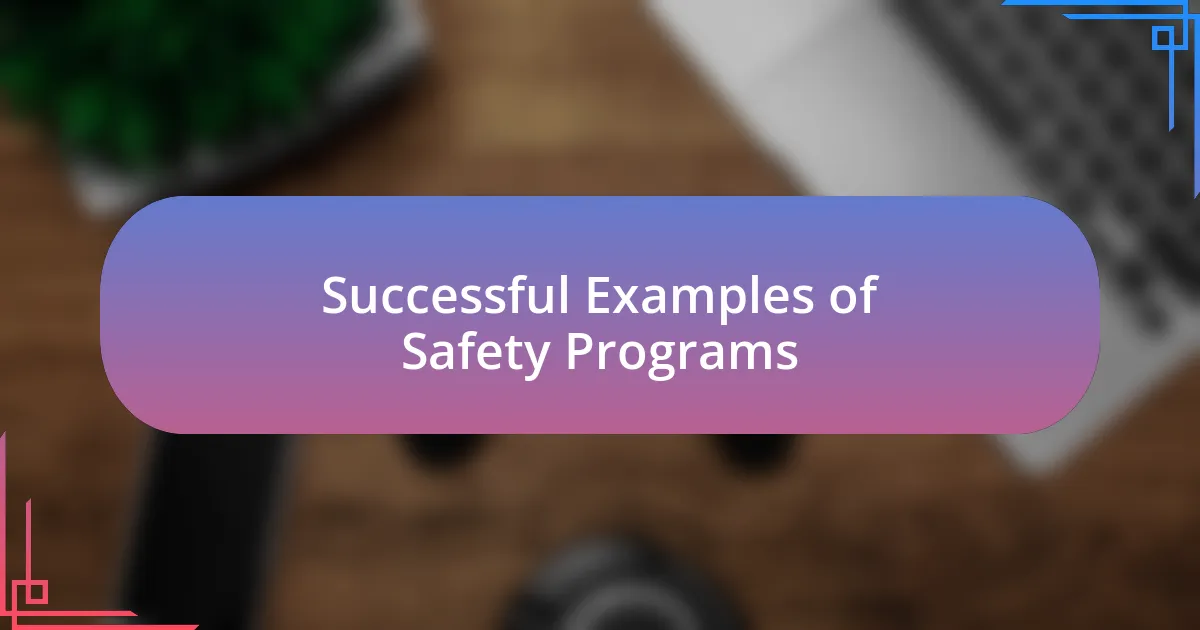
Successful Examples of Safety Programs
One standout example of a successful safety program is the “Neighborhood Watch” initiative that I participated in during my early years of homeownership. It was refreshing to see neighbors coming together for a unified cause, sharing information about local crime and looking out for one another. This sense of community connection not only lowered crime rates but also fostered lasting friendships—how often does that happen in our busy lives?
Another remarkable program I encountered was a youth mentoring initiative in my area. By pairing at-risk youth with positive role models, the program not only provided guidance but also instilled a sense of responsibility and belonging among participants. Seeing those young people transform over time was incredibly rewarding; they moved from feeling isolated to actively contributing to neighborhood safety. What a powerful shift that can be!
In a more recent example, a local community organized regular safety workshops that empowered residents with self-defense skills and emergency preparedness training. I attended one of these sessions, and I recall the collective energy in the room as participants practiced techniques. This proactive approach made us feel more empowered and engaged. Isn’t it fascinating how gaining knowledge can directly translate into a stronger sense of safety?











